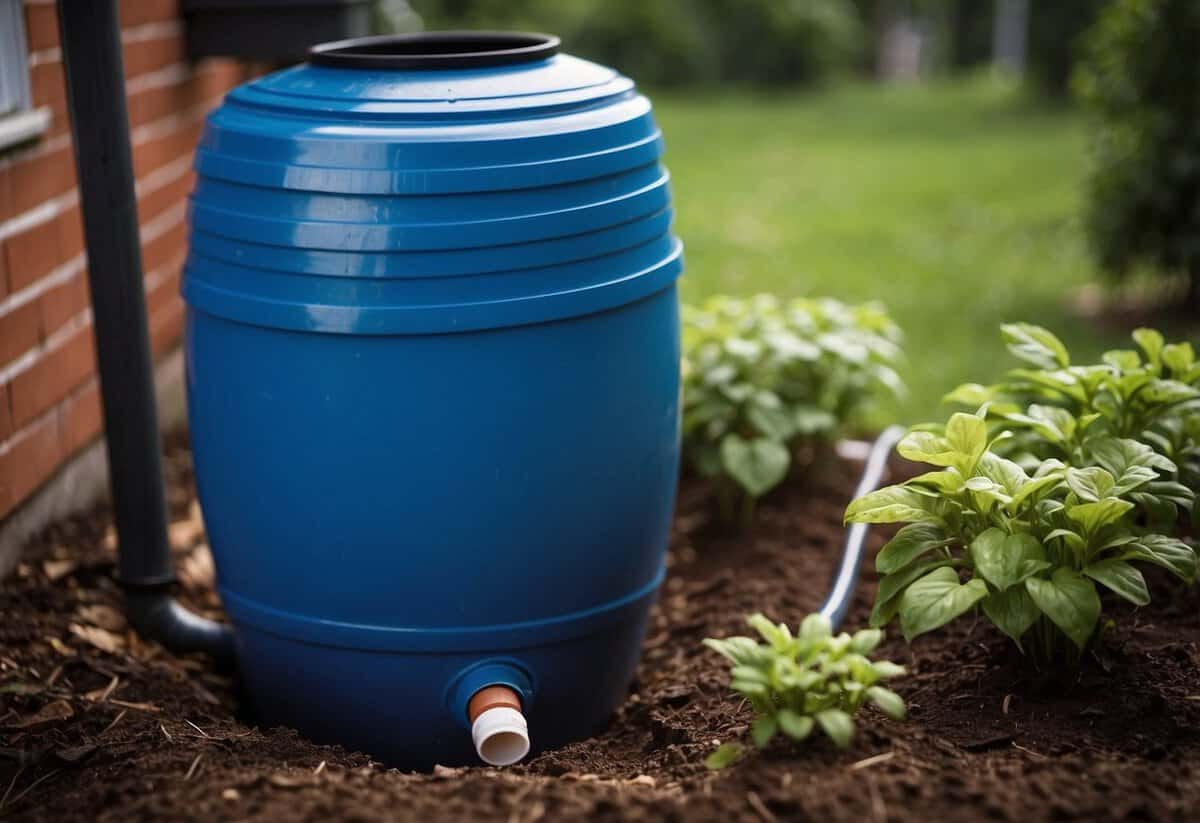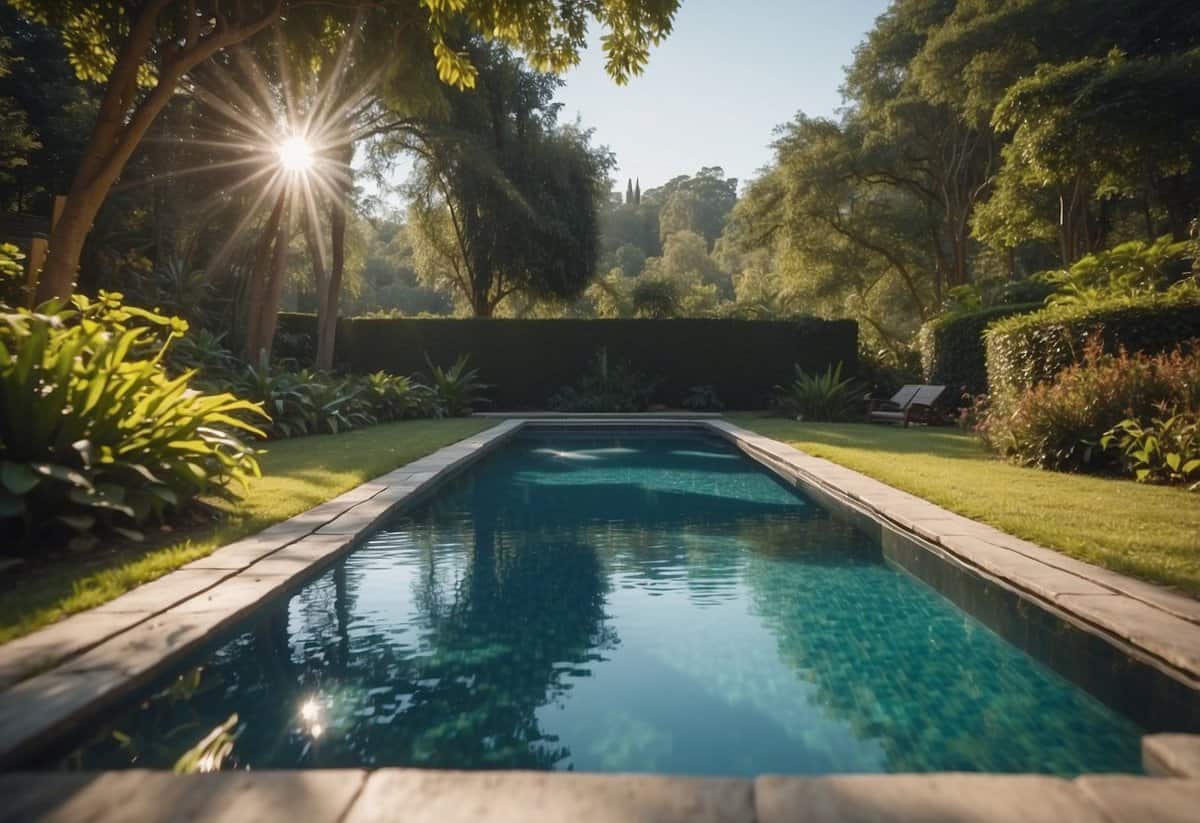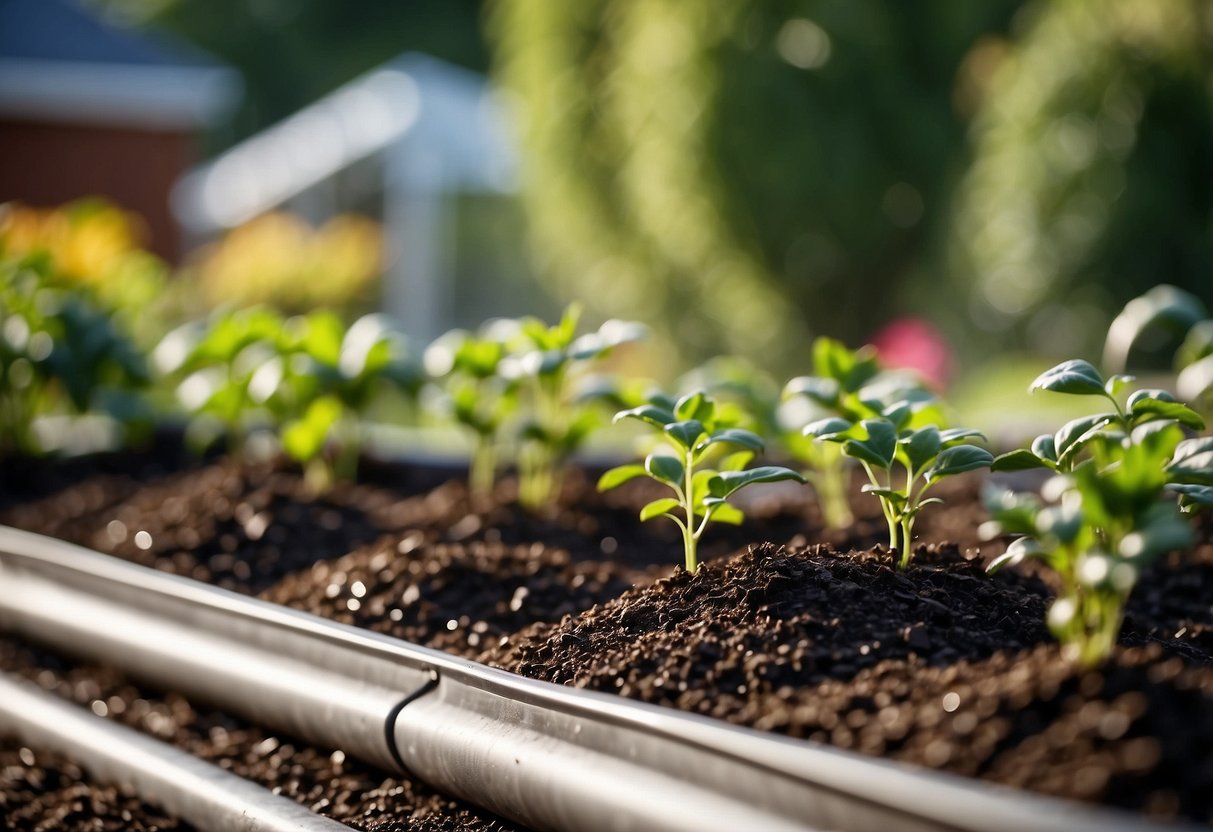Tips to Save Water in the Garden: Smart and Simple Strategies
Maintaining a beautiful garden while conserving water can be a rewarding challenge. It’s important to find ways to keep your plants healthy without wasting this precious resource. With water being a crucial factor for plant growth, learning how to use it efficiently can make a big difference in both your garden’s appearance and your water bill.

Why should you care about saving water in your garden? Water conservation not only helps the environment but also keeps your garden thriving during dry periods. By adopting some effective strategies, you can ensure that your plants get the right amount of water they need without any wastage.
1) Install a Rain Barrel

Installing a rain barrel is a great way to save water in your garden. Rain barrels collect rainwater from your roof, which you can then use to water your plants.
Start by selecting a spot near a downspout to install your rain barrel. You can find detailed instructions on how to set one up at HGTV or Home Depot.
Using rainwater helps you reduce your water bill and is better for plants since it’s free of chemicals. Plus, it’s an easy DIY project!
2) Use a Soaker Hose

A soaker hose can help you save water in your garden. It delivers water directly to the roots of your plants, reducing evaporation.
Lay the soaker hose along the base of your plants. Make sure it’s close to the roots for better absorption.
Turn on the water at low pressure. Let it run until the soil is moist.
Secure the hose with stakes or garden staples to keep it in place. This helps ensure even watering.
Using a soaker hose can save time and water while keeping your garden healthy.
3) Mulch your plants

Mulching your plants is a great way to save water. It helps keep the soil moist by reducing evaporation. You won’t need to water as often when you have a good layer of mulch.
Mulch also suppresses weeds. Fewer weeds mean less competition for water with your plants. Plus, mulch can improve soil health over time.
There are many types of mulch, like organic materials and even rocks. However, be cautious with rocks as they can heat up quickly and harm your plants. For more details, visit Bob Vila’s guide.
4) Water Early in the Morning

Watering your garden early in the morning is a great way to save water. At this time, the temperatures are cooler.
This allows plants to absorb water better before it evaporates. It’s best to water before 9 or 10 AM.
You also help prevent diseases by allowing the leaves to dry off during the day. Avoid watering in the middle of the day to reduce water loss.
This simple habit can make a big difference in conserving water.
5) Group plants with similar watering needs

Grouping plants with similar watering needs makes gardening more efficient and saves water. Plants that need more water can be placed together, making it easier to focus your watering efforts.
Using this method, you can create water zones and ensure each area gets the right amount of water.
This also helps reduce water waste, making your garden more sustainable and easier to maintain. Grouping native plants can also cut down on watering needs, as they adapt well to local conditions.
6) Fix leaky hoses and faucets

Leaking hoses and faucets waste a lot of water. Check your garden hose for any leaks or damages. If the leak is at the connection, replace the washer or use plumber’s tape to seal it.
Inspect your garden faucet for drips. Use a wrench to tighten any loose parts, and consider installing new washers if necessary. Keeping your equipment in good shape will save water and help your garden thrive.
7) Use a watering can

Using a watering can helps you control the amount of water you use. It’s easier to direct the water right where your plants need it.
A watering can also helps prevent overwatering. This can keep the plants healthier and reduce water waste.
8) Plant Drought-Resistant Plants

Choosing drought-resistant plants is a smart way to save water. These plants need less water to thrive and are ideal for dry climates.
Some plants with great drought tolerance are lavender, aloe vera, and black-eyed Susan. They add beauty to your garden without requiring frequent watering.
Adding mulch around these plants can help retain moisture and suppress weeds. A mix of these hardy varieties will provide color and interest to your garden. Check out some drought-tolerant plants for more ideas.
9) Cover your swimming pool

Using a pool cover can save a lot of water. When you don’t cover your pool, water can evaporate quickly. Without a cover, an 18×36 foot pool can lose about one inch of water each week during summer. That’s around 7,000 gallons a year!
A solar cover is a great option. It reduces evaporation by 90 to 95% and helps keep your pool warm. You can find more about pool covers at Natare. Keep your pool covered to save water and reduce your water bill.
10) Use a Broom Instead of a Hose to Clean Driveways

Using a hose to clean your driveway can waste a lot of water. By using a broom, you can save up to 80 gallons of water each time. This method is also good for the environment and helps conserve water.
Sweeping your driveway is not only better for water conservation but also gives you some light exercise. It’s a simple swap that makes a big difference. So grab a broom and start sweeping!
Understanding Water Usage In Your Garden

To save water in your garden, it’s important to know which areas use the most water and understand the different needs of your plants.
Identifying High Water Consumption Areas
First, look for areas in your garden that seem to always need watering. Lawns are a major water consumer. They often require frequent and deep watering, which can add up quickly. If your lawn is large, consider reducing its size or switching to drought-tolerant grasses.
Check your flower beds and vegetable plots. Some flowers and vegetables need more water, especially during dry periods. You can group plants with similar water needs together to make watering more efficient. This is called hydrozoning. Putting thirsty plants in one area and drought-tolerant plants in another can help you save water.
Use a rain gauge or soil moisture meter to see how much water your garden gets naturally. This will help you avoid over-watering. If you notice excessive runoff or puddling, your garden might be getting too much water.
Differentiating Between Plant Water Needs
Different plants need different amounts of water. Succulents, like cacti, need very little water and do well in hot, dry conditions. On the other hand, plants like tomatoes and cucumbers need consistent moisture, especially when they’re fruiting.
For trees and shrubs, deep and infrequent watering is often best. Their roots grow deep into the soil, so they can access water stored below the surface. This means you don’t need to water them as often.
Consider the climate where you live when choosing plants for your garden. Native plants are typically well-suited to local conditions and require less additional watering. Using mulch around your plants can also help retain moisture and reduce the need for frequent watering.
By paying attention to the specific water needs of plants and adjusting your watering habits accordingly, you can conserve water and still keep your garden thriving.
Efficient Watering Techniques

Using the right watering techniques can help you save water and maintain a healthy garden. Two great methods are using drip irrigation systems and soaker hoses.
Utilizing Drip Irrigation
Drip irrigation is a method where water drips slowly to the roots of plants through a network of valves, pipes, and tubing. This technique reduces water waste and ensures plants get the moisture they need. You can adjust the system to release water directly at the base of each plant, helping prevent soil erosion and evaporation.
Benefits of Drip Irrigation:
- Targeted watering minimizes runoff
- Reduces weed growth since only targeted plants are watered
- Works well in windy conditions
Setup Tips:
- Plan your layout: Identify the plants needing drip irrigation.
- Install tubing and emitters: Place emitters near the root zone of plants.
- Use a timer: Automate watering schedules to save time and water.
For more ideas on using drip irrigation, you can visit this guide on conserving water in the garden.
Implementing Soaker Hoses
Soaker hoses are another efficient way to water your garden. They slowly release water along their length, providing a deep watering effect. The hoses can be laid throughout garden beds and around shrubs, delivering water directly to the soil surface.
Advantages of Soaker Hoses:
- Easy to install and move around
- Conserves water by minimizing evaporation
- Can be easily integrated with mulching to retain moisture
How to Use Soaker Hoses:
- Position the hoses: Lay them around plants in loops or rows.
- Bury them slightly: Cover with mulch to keep them in place and reduce evaporation.
- Connect to a water source: Attach to a regular garden hose with a timer to control watering duration.
Check out these water-saving tips for more details on using soaker hoses effectively.
Soil Improvement Methods

Improving your garden’s soil can greatly enhance water conservation and plant health. Two key strategies are enhancing soil moisture retention and adding organic mulch.
Enhancing Soil Moisture Retention
Improving soil moisture retention is essential for conserving water and ensuring your plants get enough hydration. One effective method is to regularly add compost to your soil. Compost improves the soil structure, making it more capable of holding water. You should aim to mix in about an inch of compost each year.
Another way to boost moisture retention is by incorporating organic materials, like coconut coir or shredded leaves, into the soil. These materials help keep the soil moist and reduce the need for frequent watering. For best results, mix organic matter deeply into the soil to reach the root zones of plants.
Additionally, using cover crops such as clover or buckwheat can help. Planting these cover crops during the off-season adds organic matter and improves soil’s water-holding capacity.
Adding Organic Mulch
Adding organic mulch is another effective method to improve your soil and conserve water. Mulch reduces water evaporation from the soil surface, leading to less frequent watering. Materials like straw, wood chips, or shredded leaves work well as mulch.
Apply a 2 to 3-inch layer of mulch around your plants, but be sure to keep it a few inches away from plant stems to prevent rot. Mulch not only retains moisture but also suppresses weeds and adds organic matter to your soil as it breaks down.
Using mulch made from green organic matter, such as chopped comfrey, can provide additional nutrients to your soil. This method creates a nutrient-rich layer that benefits your plants while conserving water.
By implementing these soil improvement methods, you’ll enhance water retention and create a healthier garden environment.







